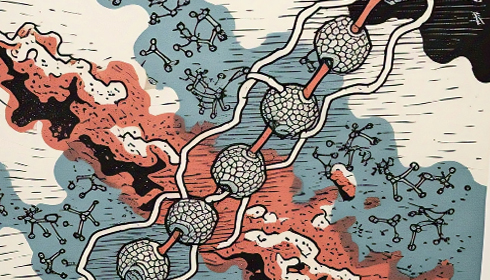
New Blood Test Reads RNA to Spot Cancer
A team of US researchers has developed a new blood test that can diagnose cancer, reveal how tumours avoid treatment, and even assess damage to healthy organs. By scanning RNA fragments—molecules that convey instructions inside cells—this method promises a low-risk way to monitor disease in real time.
Every day, cells die throughout the body and release their contents into the bloodstream. Among the leftovers are RNA fragments, including messenger RNA (mRNA). In live cells, mRNA functions as a courier, transporting genetic blueprints from DNA to cellular "factories" that produce proteins. Once eliminated, these snippets float freely in the blood and are referred to as cell-free RNA. Until recently, testing has primarily focused on DNA, but RNA can tell which genes are active—which can alter as disease progresses.
"Just as archaeologists can learn about ancient societies by studying the garbage they left behind, we can learn a lot about what is going on in a patient's body's cells based on the degraded RNA molecules that are cleared through the blood," said Dr Maximilian Diehn, one of the study's leaders and a radiation oncologist. "We have developed a sensitive, versatile new type of liquid biopsy that measures cell-free and circulating-tumour RNA and has the potential to enhance personalised medicine in cancer and non-cancer diseases."
Not all RNA in the blood is valuable for detecting illness. Ribosomal RNA, a structural component of the cell's protein-making machinery, accounts for approximately 95 per cent of total cell-free RNA. The new test ignores the bulk and focuses on mRNA, which accounts for the remaining 5 per cent. To improve its accuracy, the scientists concentrated on approximately 5,000 genes that are rarely seen in healthy blood—so-called rare abundance genes. By focusing on this fraction, the test's capacity to detect cancer signals increased more than fiftyfold.
In a trial of lung cancer patients, the approach discovered tumour-derived RNA in 73% of cases, even in the early stages when tumours are small and difficult to detect. "Analysis of the rare abundance genes lets us focus on the most relevant subset of RNA for detecting disease, just like archaeologists who want to learn about what people ate might focus on a subset of artefacts such as food containers or utensils," explained Dr Ash Alizadeh, who was the study's lead author.
Many tumours become resistant to treatments without changing their DNA. They may modify how genes are expressed or how they appear under a microscope, revealing alterations that DNA tests do not detect. By reading mRNA, the new test can detect these changes. "Our non-invasive approach has the potential of avoiding surgical biopsies and identifying these common types of resistance earlier before substantial disease burden shows up on scans or presents with symptoms like pain," according to Alizadeh. Detecting resistance early allows doctors to switch medicines before cancer spreads further.
Platelets, which are cell fragments that aid in blood clotting, also carry RNA and can mask cancer signals, posing a significant obstacle. To address this, the researchers designed a two-pronged approach: unique chemical processes in the lab and computer systems that remove platelet contributions from data. This makes the test valid for both freshly taken samples and blood preserved in freezers.
"This approach means that the test can be used to examine blood samples currently in the freezer from a completed clinical trial, for example, and could help find a molecular signature that predicts who responded to a drug and who did not," Dr Diehn said. Mining existing sample banks could accelerate findings without requiring new patient visits.
Beyond malignancies, the test monitors harm to healthy tissues. It detected large quantities of normal lung RNA in patients in severe respiratory distress (those on ventilators). The severity of a patient's COVID-19 illness directly correlated with the amount of lung RNA in their blood.
Even in healthy smokers, modest but clear lung-RNA signals indicated microscopic damage. Such insights could help guide treatments for heart attacks, infections, and other illnesses characterised by fast cell death.
The study, which was just published in a renowned academic publication, describes both laboratory methodology and real-world results. While further trials are needed to get the test into ordinary clinics, experts say the ability to read cell-free RNA is a huge step towards genuinely personalised monitoring—catching cancer early, tracking treatment progress, and detecting organ damage all from a single blood sample.